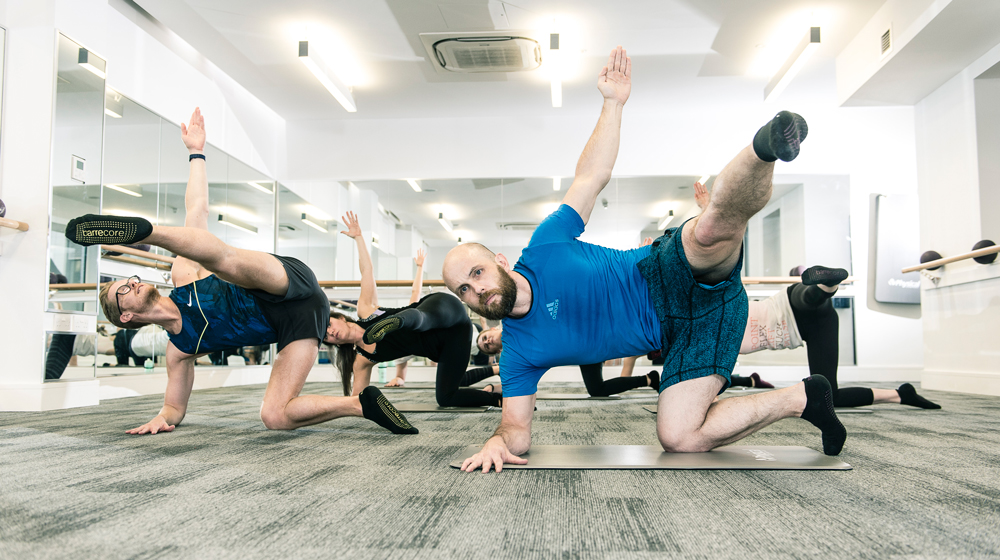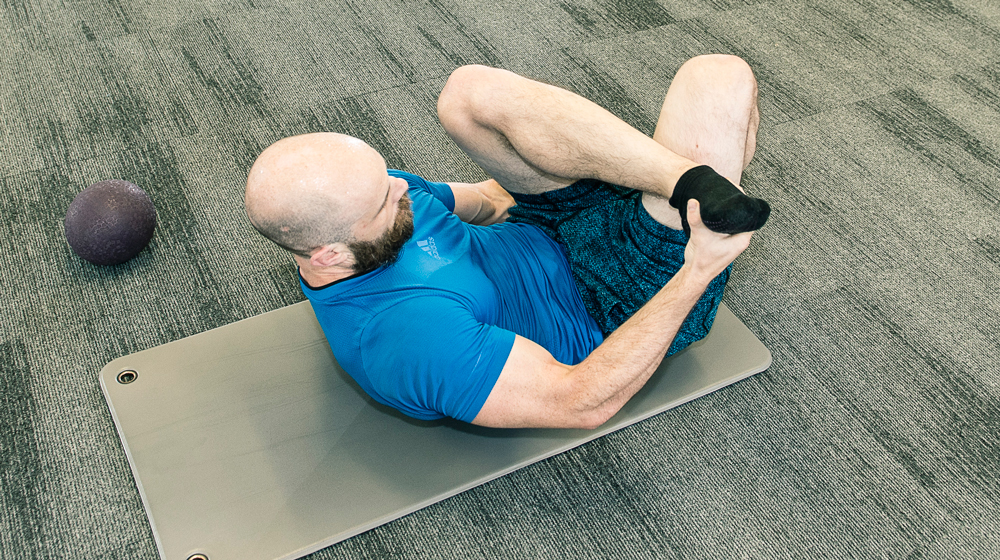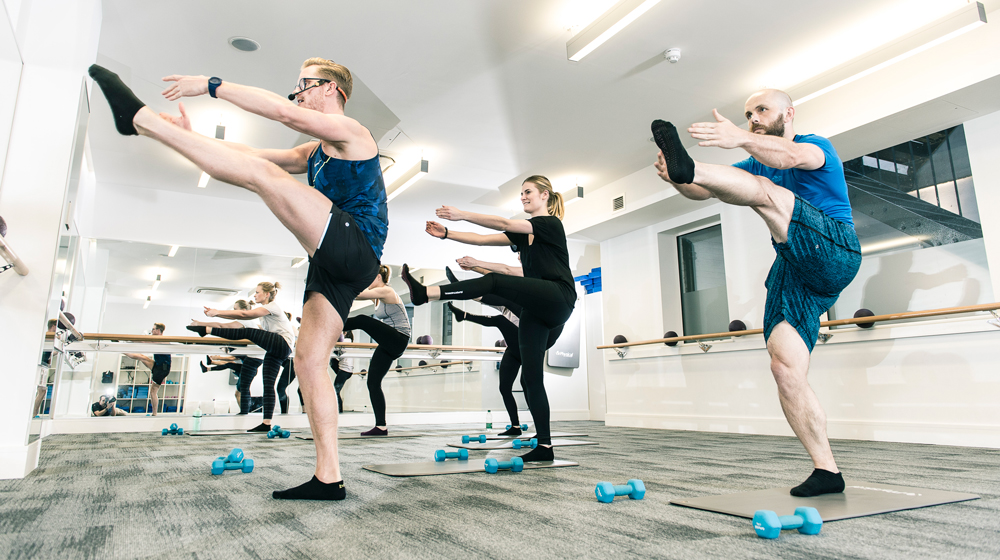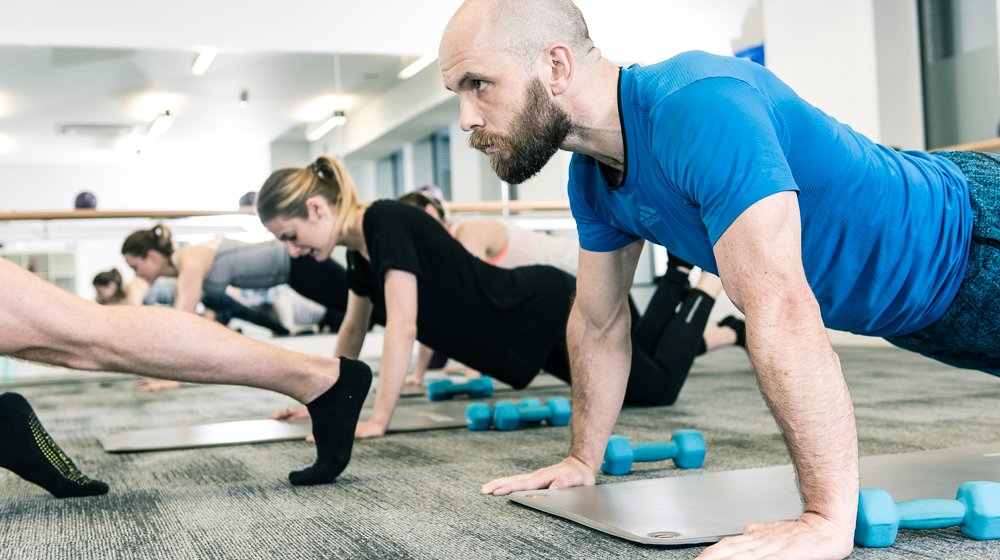Hit the Barre: We Learn a Thing or Two at Barrecore
A new wave of ballet-inspired fitness classes promise strong legs and a cast-iron core – without big weights

What is It?
Beloved of socialites and models, fitstagrammers and food bloggers alike, Barrecore is the ballet-based brainchild of former yoga teacher Niki Rein and it’s laser-targeted at people who want to slim down and firm up – not bearded gentlemen looking to improve their deadlift.
It’s a combination of moves from Pilates, yoga and ballet, alongside stretching, core work and physio-style moves. The heaviest weights involved are 2.5kg dumbbells, and moves make use of yoga blocks, stretch bands and small, partially-deflated balls.
RECOMMENDED: Core Strength Exercises
It’s not even close to the way I usually train, but then that’s sort of why I’m here in the first place. With a decade of injuries and imbalances niggling at me, I’m finally half-prepared to admit that my programme might be missing some gentler work. At this stage of my life (an aches-and-pains-managing 37), it’s possible that a bit more gentility is exactly what I need. Also, let’s be realistic: ballet dudes (technical term) can jump really, really high. There must be something in it.
The Method

“We’re getting more and more guys at Barrecore,” says Maria Eleftheriou, lead instructor at the movement’s Mayfair location, who’s offered to take me through the basics of the class one on one. “They’re usually surprised by how hard it is.” Either she’s going particularly hard on me or she’s completely right: within ten minutes, I’m holding what seems like an innocuous demi-plié at the barre while shaking as if it’s been electrified. “Find your shake”, as I quickly come to learn, is a popular Barrecore mantra – a side effect of the isometric-heavy deluge of exercises that make up every class.
Apart from spending a lot of time on tiptoe, what Barrecore emphasises is working on the adductors and abductors, either squeezing a ball between your legs or “pulsing” your thighs outwards. There’s also a large amount of glute activation involved: the glutes are the key muscles used in the traditional arabesque (basically, raising your leg behind you), but anyone with an office job will have put them to sleep with endless sitting.
This, I soon find, includes me: after five minutes of kneeling pulses with one leg raised, I can feel the muscle fibres firing harder than they do during a heavy back squat. It’s not entirely pleasant. To teach me proper jumping dynamics, Eleftheriou gets me lying flat on my back on a Pilates machine called the Garuda – basically, a spring-loaded bed with a big platform at one end. This lets me practise the sort of leg moves that ballet dancers are expected to do mid-air in something like slow motion, but also adds a nasty twist to core basics like the plank, introducing instability and movement to make things harder.
Sign up for workout ideas, training advice, reviews of the latest gear and more.
I’m surprisingly sore after the session: not always a guarantee that something’s effective, but a good indicator that you’re working muscles in ways you haven’t before.
The Test

Then it’s time to graduate to the full class. Thankfully, Eleftheriou’s taught me the key moves, so I don’t have to worry about keeping up with the high-speed choreography – although I am a bit concerned about how inflexible and, apparently, weak I am compared with the other attendees, most of whom never seem to sweat.
Classes start with a dynamic warm-up, progress with some surprisingly tough press-up/plank variations and shoulder moves, move to the barre for balance and leg work, then finish with glutes, core and stretching. It’s an intense hour, and full of stuff that, if I’m honest, I should be doing anyway: strict tempo press-ups, ultra-slow abs moves and holds, emphasis on tucking your tailbone (essential for proper squatting) and exactly the sort of stretches that I never do.

There’s never time to get bored: a typical lunge circuit done at the barre might take two minutes but include six mini-variations, each targeting slightly different muscles or varying the tempo and rep range. The instructors are relentlessly high-energy, and split their time between demonstrating the moves (invariably putting me to shame with their flexibility) and correcting people’s form (usually mine).
Some of the ladies do four classes a week, and it shows. “Finding your shake” for me means shuddering like a Tasered protestor, while they do the same moves with a dignified hummingbird tremble. For the hardcore there’s BarreAdvanced, which increases the complexity and reduces the rest, or HIITcore, which increases the fat-burning effect with a high-intensity interval section.
The Verdict
Well, it works. A couple of weeks in, I’m able to follow the class and do most of the tougher variations prescribed, even though I never quite manage the swan-like elegance (or extraordinary bendiness) of the class’s real veterans. After four weeks the post-class aches have lessened and I’m shaking less – and, when I go back to the regular gym, planking longer and jumping higher.
Obviously, I’m not going to replace my regular workouts with time at the barre (I like big weights too much), but it’s taught me a dozen new moves that I’m already incorporating into other workouts, and reminded me that slowing everything down can speed up your gains. Also, I bust a mean jeté. Recommended.
Find out more at barrecore.co.uk
The Breakdown
- For any fitness level ✓
- Lose fat ✓
- Build muscle ✓
- Get stronger ✓
- Injury proofing ✓
- Under 30min ✕
- Track progress ✕
- Technique advice ✓
- Cheap ✕
- No membership required ✓
Score 7/10
Barre essentials
Not convinced enough to do a class? We’ve strip-mined Barrecore for the elements you need in your current regime.
Figure-four
It’s a glute stretch and hip opener in one package. Fold one ankle over the other knee, then sit up with your hands behind you, rocking from left to right.
Fire hydrant
From all fours, bring your leg up to one side as if you were, well, a urinating dog. Straighten it, touch your toes to the floor, then bring them up as high as possible. Repeat ten times on each side.
Arabesque
Classic ballet, but also a fine pre-workout glute activator. Stand at a barre (or a chair or table) with one forearm resting on it, then raise one straight leg behind you as high as possible. “Pulse” for ten seconds and repeat with your other leg.
From 2008 to 2018, Joel worked for Men's Fitness, which predated, and then shared a website with, Coach. Though he spent years running the hills of Bath, he’s since ditched his trainers for a succession of Converse high-tops, since they’re better suited to his love of pulling vans, lifting cars, and hefting logs in a succession of strongman competitions.

